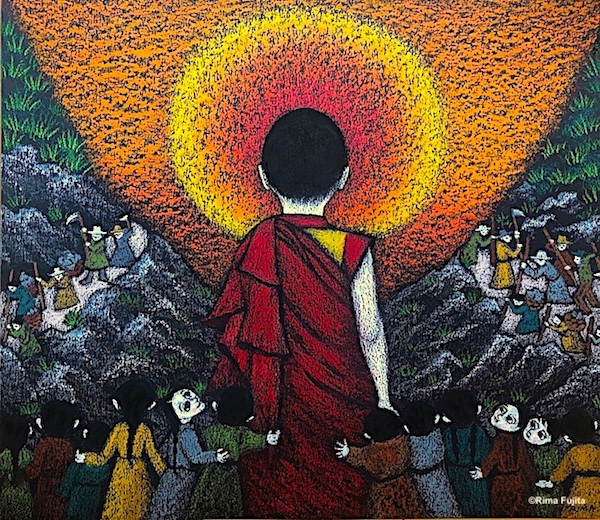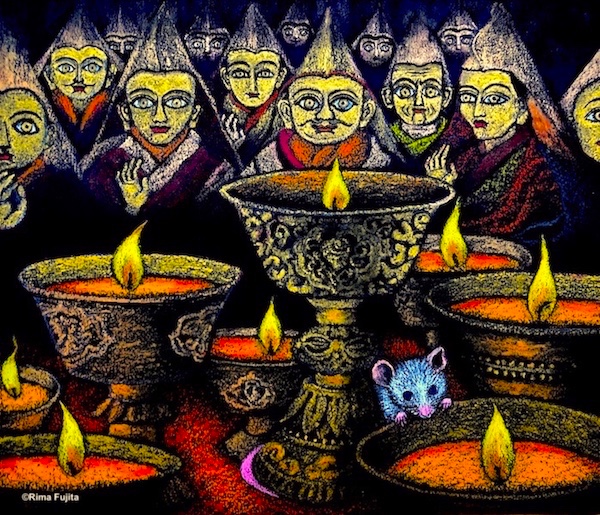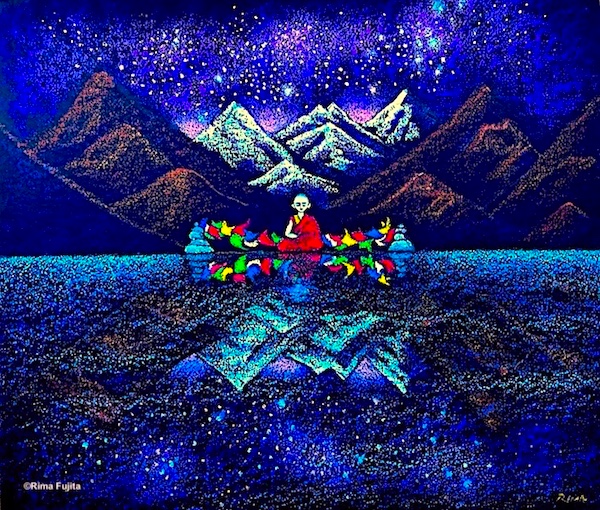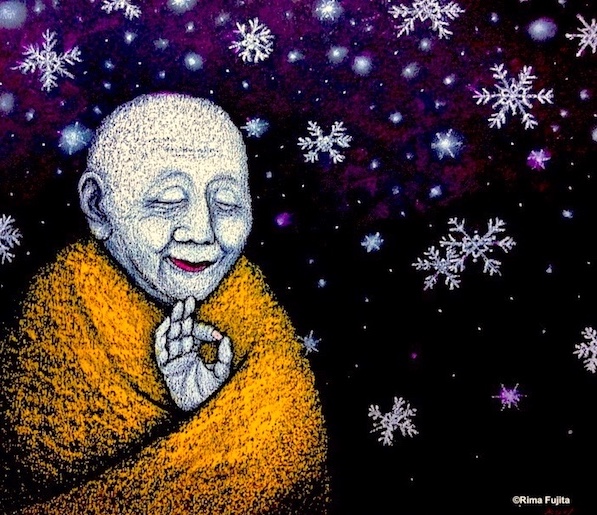“As I have often said, I am a simple Buddhist monk. Nothing more, nothing less.” This is a famous catchphrase by His Holiness, which had it been from the lips of anyone less than a holy figure, would probably have turned into a meme on social media a long time ago. In more world-weary eyes, this could be a wry allusion to what has manifestly, obviously, been an extraordinarily unique and complex life: one characterized by exile, redefining the Buddhist zeitgeist in the West, and shouldering the burden of entire religious communities.
In many ways, his is a tale retold many times, one that Tibetans in China, Tibetans residing in India or the West, and Western Buddhists themselves are familiar with. What is unique about this newest iteration of His Holiness’s life is its distilled message, perfect for children, and the accompanying illustrations drawn by Buddhist artist Rima Fujita: The Extraordinary Life of His Holiness the Fourteenth Dalai Lama: An Illuminated Journey.

As I have written in a previous post highlighting Rima’s work, she works with a distinctive style that focuses on vivid colours and fairytale-like landscapes and figures. She applies this visual philosophy to her new book, tracing the Dalai Lama’s life from his childhood to his exile. The story is easy to follow and straightforward, written to be able to be read as a bedtime story (although some of the content can be quite heavy). Rima does not shy away from painting truly striking images that might seem arresting: “5. Life at the Potala,” for example, features statues of the previous thirteen Dalai Lamas in the Potala Palace, their baleful stares drawing the reader’s gaze almost instantly. (16)

Rima constantly switches vistas and angles: some paintings are intimate and draw forth a wellspring of human emotions, not just the spiritual, while some paintings emphasize the grandeur of nature and relegate human beings to miniscule or background status, such as the painting for “8. Exile” (29). My favourite painting in the book is the centrepiece of “2. How I Was Discovered,” where Reting Rinpoche, a member of the search team that discovered Tenzin Gyatso, is meditating in front of the Himalayan mountains. This mountainscape is reflected in a vast lake, those glistening waters mirroring the night sky and Milky Way stars. (9) The fourfold visual and poetic symmetry is enchanting, and placing a small, meditating Tenzin Gyatso at the centre of this cosmic, “as above, so below” motif is a work of artistic ingenuity.

Narratively, the story told by the Dalai Lama basically ends when he recounts receiving the Nobel Peace Prize. I am not certain why he has chosen this recollection to wrap up his tale, but perhaps it is because he prefers to focus on his reflections about who he is at present and his wishes for the future. “11: Sixty Years in Exile” is a very human and relatable indulgence in nostalgia; and there is a palpable tinge of melancholy and wistfulness upon reading words like, “I am in my mid-eighties now,” or “When I feel sad I often visualize the Buddha in lotus position and myself sitting next to him. Then I lay my head on Buddha’s left knee. Somehow, this always eases my sadness and comforts me.” (35 – 36) The sections after this chapter emphasize his thoughts on the future, and what he would like to do with the remainder of his life. Yet these are not the irrelevant musings of an elder with no more skin in the game. In fact, he does not shy away from sensitive matters and continues to think in bold and ambitious terms, for his community as well as the entire world’s development of compassion.

Overall, this is a wonderful, short pocket book that will be a welcome addition to followers of His Holiness and readers that appreciate art. There is little in here that will be new to those familiar with the Dalai Lama’s story, but the way in which Rima presents his life and story is quite something else.
Rima Fujita. 2021. The Extraordinary Life of His Holiness the Fourteenth Dalai Lama: An Illuminated Journey. Somerville, MA: Wisdom Publications.
Related blog posts from Buddhistdoor Global
Visuals of Compassion: Artist Rima Fujita on her new exhibit, “Karuna”
Rima Fujita: Art and Action

